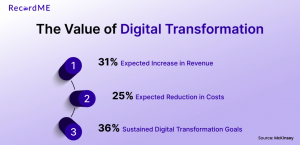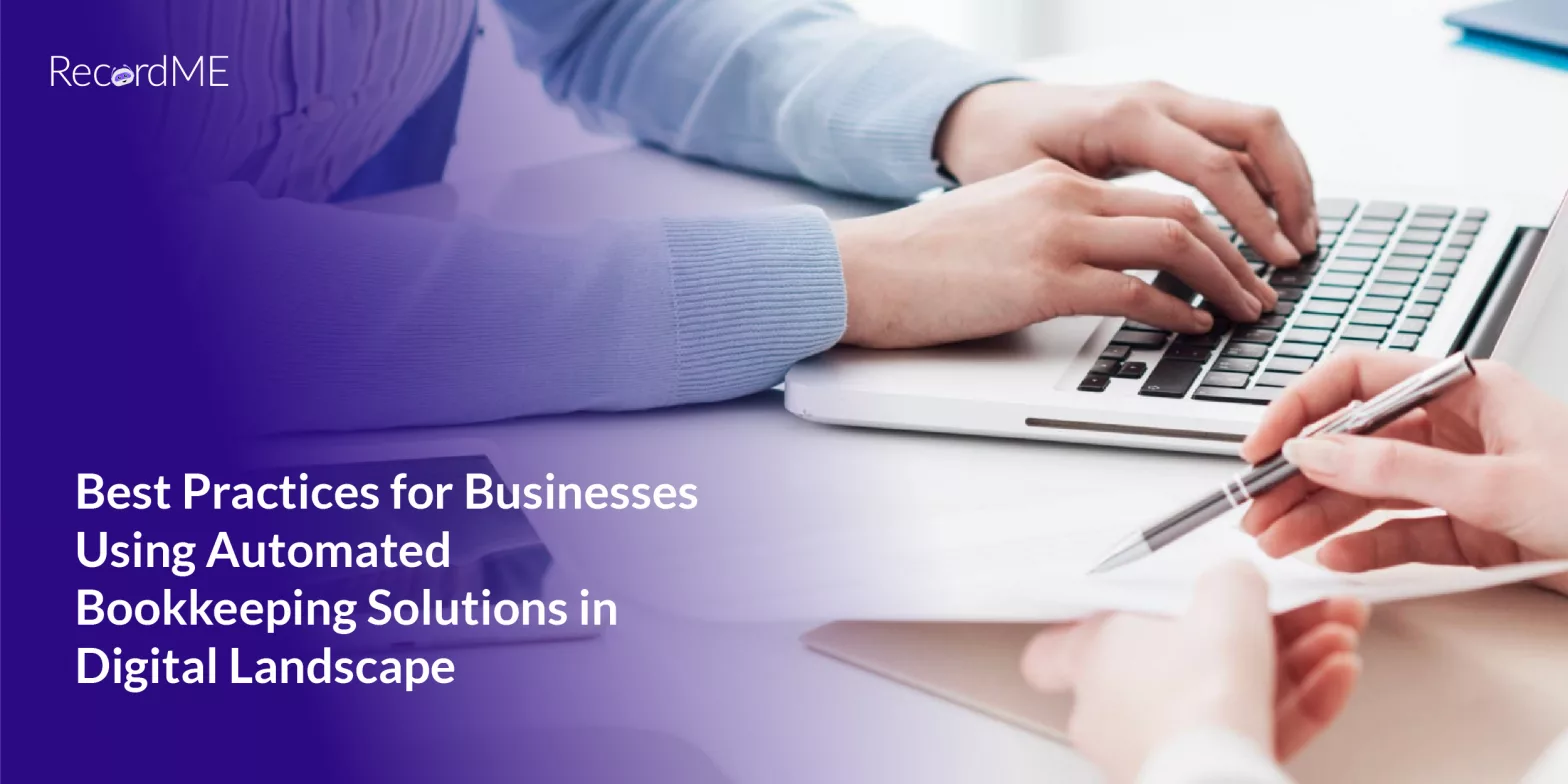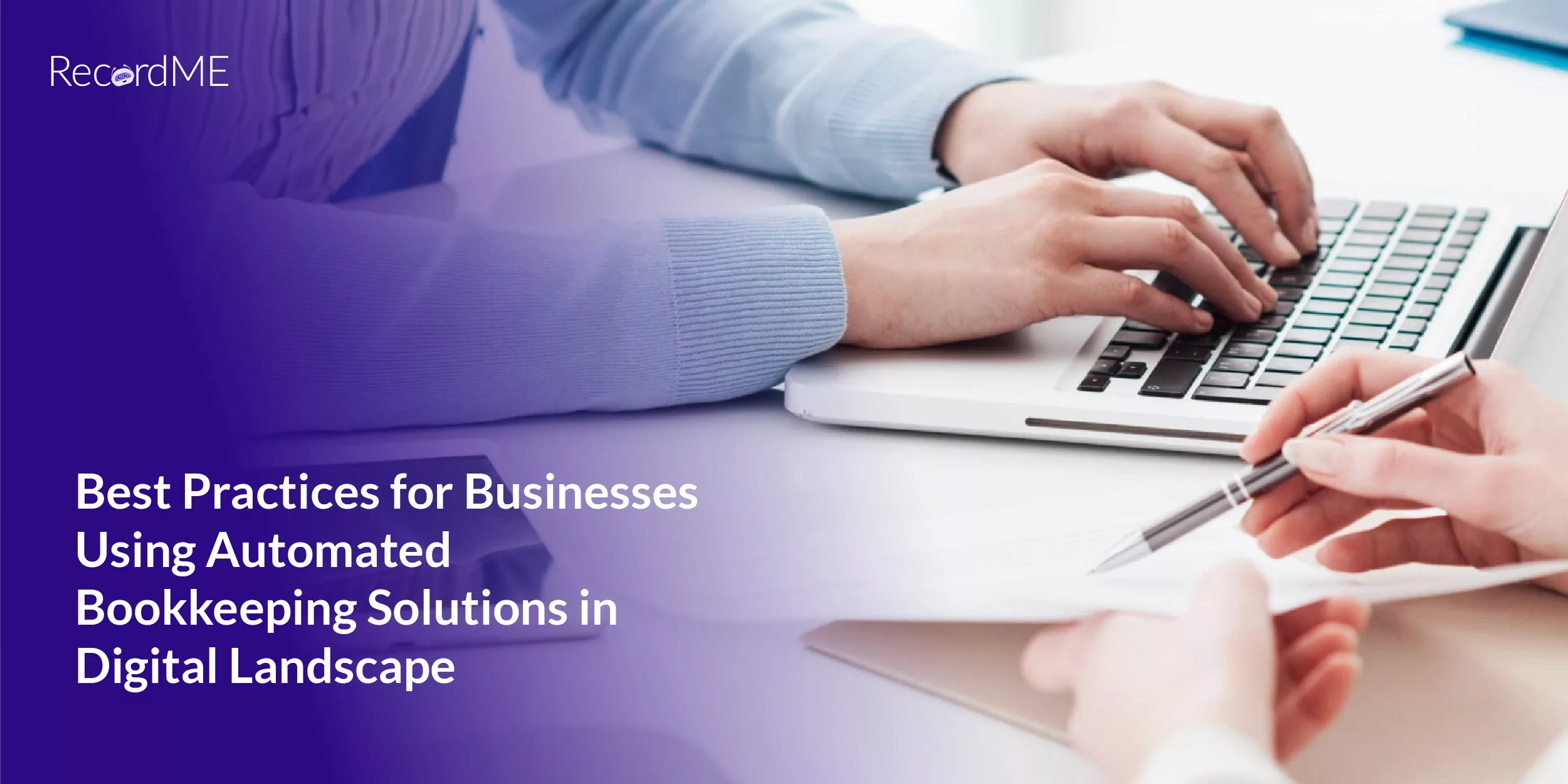Technological developments, regulatory changes, and stakeholder pressure are some factors disrupting modern businesses. Adopting digital solutions is the answer to surviving in the future and ensuring growth. It’s, therefore, no surprise that companies are embarking on transformative changes to increase business efficiency. However, in many industries, such programs often fail owing to a lack of a business realignment strategy. According to McKinsey research, 70% of such programs do not reach completion or stated goals. Accounting is one such industry that needs to replace manual processes with an automated bookkeeping system. An Association of Chartered Certified Accountants (ACCSA Global) report reveals that 55% of accounting professionals and leaders believe automated bookkeeping services will have the most significant impact in the coming years.
Digital Transformation Strategy
For many companies, digital transformation is their reaction to evolving competitors and the business landscape. Such an approach tends to be short-lived and focuses only on current results. Regardless of the circumstances, digital transformation can only help if the company plans for long-term sustainable growth and successful implementation. Although it is easier said than done, at the same time, ordinary transformation plans can only achieve less-than-satisfactory results. Simply investing in digital bookkeeping and AI-enabled accounting automation is not enough. Businesses must define clear KPIs, business realignment strategies, and maintenance programs. Ideally, such a strategy should help seamlessly integrate the changes with the existing system and business goals.

Employee Training
Establishing an automated bookkeeping solution does not just depend on the installation of the software. For a smooth transition to digital accounting, the business leaders and accounting workforce need to be aligned on the goals of the automated bookkeeping solution. Therefore, the first step in developing a sound transformation strategy is to convey the roles and responsibilities of the workforce in the new system. The Journal of Accountancy notes that 90% of accountants believe that technological advancements, such as online bookkeeping services, will be the key differentiator in the accounting space. A seasoned executive in the company should use this positive outlook to motivate the employees to upskill for digital transformation.
Overcoming Cybersecurity Risks
It must be noted that even though technological transformation sounds exciting, it is associated with significant cybersecurity risks. The increased digitization and rapid growth of accounting automation can allow hackers to exploit weak systems. The Office of National Statistics published a shocking report highlighting 46% of businesses suffer from cybersecurity attacks. It’s important to note that a haphazard approach to implement digital bookkeeping is not just a technological issue, it affects business operations as well. Losing confidential financial data or client information may result in legal repercussions and irreparable reputational damage. To execute a sustainable plan, companies must look for automated bookkeeping services that maintain high data encryption and security standards.
Seamless Integration
Stacking digital bookkeeping software over an existing system is not the definition of transformative change. Such a step will complicate the processes and reduce employee retention due to the extra burden. By choosing a flexible automated bookkeeping solution, businesses can ensure seamless change. For this purpose, look for solutions that provide integration capabilities with accounting software and communication platforms. Any change in the linked platforms will reflect on the virtual bookkeeping service in real-time. Therefore, accountants will be freed from double data entries. To oversee the proper execution of digital bookkeeping, decision-makers should verify the integration capabilities.
Suggested Read: How to Choose the Right Accounting Automation Solution?
Customization Options
As customer expectations evolve, it becomes essential not to get locked in redundant automated bookkeeping. Accounting is more than crunching numbers on a sheet. Understanding business insights, solving problems, and making strategic recommendations are core parts of an accountant’s job. The purpose of accounting automation is to assist a professional in their tasks and simplify the grunt work. It’s necessary to use solutions that utilize modern AI and machine learning capabilities to provide advanced analytics. In short, executives need to ensure two things before implementing digital bookkeeping software. Firstly, it should align with the company processes and goals. Secondly, it should have a flexible and modular approach to innovate traditional accounting processes.
Suggested Read: Overcoming Challenges of Digital Bookkeeping and Accounting Software
Begin Your Digital Bookkeeping Journey with RecordMe
Having the right digital transformation strategy and aligning it with business goals is the key to sustainable growth. RecordMe understands that the underlying goal of automated bookkeeping is to identify and solve the key friction points in businesses. In most companies, manual data entry and collection is the chokepoint of business decisions and strategic planning. Book a call with RecordMe, and let’s see how we can streamline the bottom line of your financial operations.







